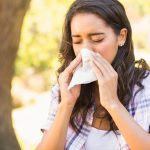
New research underscores the harms of e-cigarettes, showing that vaping increases the risk of asthma in teens who have never smoked cigarettes. Although e-cigarettes have fewer toxins than regular cigarettes, they still contain a mixture of harmful chemicals and raise the risk of respiratory diseases, researchers say. “Increasing knowledge about the harmful effects of e-cigarette use, implementing stricter regulations, and promoting alternative coping mechanisms for mental health are potential interventions to mitigate e-cigarette use,” lead author Taehyun Roh, of Texas A&M University, said in a school news release. Asthma causes wheezing, breathlessness, chest tightness and coughing. It can be controlled by taking medicine and avoiding the triggers that can cause an attack, according to the U.S. Centers for Disease Control and Prevention. This new study used data from Youth Risk Behavior Surveillance System, a CDC survey. About 3,000 adolescents in Texas, ages 13 to 17, were questioned between 2015 and 2019. The researchers compared the results with responses from more than 32,000 teens in the broader United States. Respondents were asked whether they had ever used an e-cigarette, how often they vaped and whether they had ever been told they had asthma. Researchers said that the association found between e-cigarette use and asthma among those who had never smoked conventional tobacco products demonstrates that vaping increases the risk of asthma independently from other tobacco use.… read on > read on >


















